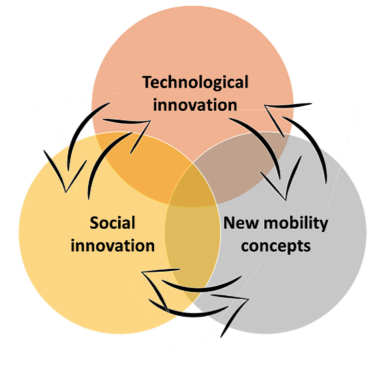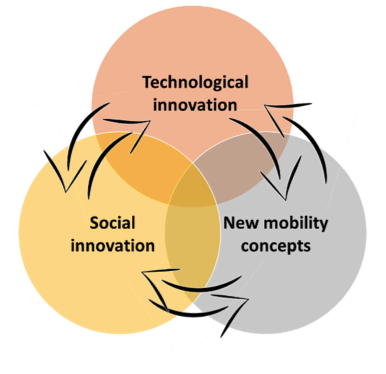
The city challenged
Due to advancements in ICT, such as Big Data and the Internet of Things, the rate of technological improvement is exponentially accelerating. As a result of ‘Moore’s Law’, the impact of ICT on society in general –including urbanism- is also expected to increase in an exponential manner, whether it concerns online shopping, working on a distance or the rise of autonomous vehicles. As a result of this, ‘Martec’s Law’ predicts a growing gap between exponential technological development and the linear development in which our current economic and political system operates, which is being recognized as ‘disruptive innovation’ or ‘digital disruption’.
Many aspects of the city are subject to this idea of digital disruption; platforms such as Uber will challenge traditional taxi services and logistics and hotels are challenged by AirBnB. Amazon has overgrown Walmart as the largest shopping platform. ICT, including (big) data collection, digital sharing platforms, smart traffic lights, autonomous vehicles and on-demand (mobility) services will -at least- influence our current practices and eventually might radically change these practices.
Disruption on three levels
When it comes to the domain of mobility, disruption can be seen on three levels:
- Technological innovation: ICT
Exponential developments in computing power, (big) data collection, real time tracking abilities and individual digital feedback possibilities bring opportunities for mobility modelling and monitoring tools have the potential to be redesigned to be more continuous, accurate, faster, cheaper and demand driven. Next to this, new visualization techniques give the opportunity to connect better to non-expert acceptance, for example giving information to citizens and politicians. Thirdly, a broader set of information can be provided, connecting better to broader strategic goals such as accessibility, sustainability, economic vitality, social equality and urban resilience.
- New mobility concepts: shared, on-demand, lifestyle-based
The rise of new mobility concepts such as online sharing platforms, bottom up initiatives, on-demand mobility services and autonomous vehicles. Partly as a result of ICT developments, these new forms of mobility concepts are being implemented as we speak. Some main elements of these new mobility concepts are: shared, on-demand, lifestyle-based.
- Social innovation: user becomes part of planning process
Digitalplatforms enable social innovation: people can connect online. This also influences planning processes as the role of governments in mobility planning is changing: new ideas and ‘bottom-up’-initiatives are being developed by citizens or startups. These initiatives can vary in scale from a local small neighborhood concept to global multinationals such as Uber. Next to this, the traditional policy cycle changes as a result of continuous data-monitoring and the ability to involve citizens in policy making, for example testing, designing and evaluating plans. Policy phases will be more parallel or iterative than current policy making.
Interconnectivity

These three developments interconnected: ICT enables social innovation as people can connect online and start new concepts or exchange goods and services via digital platforms, such as shared mobility concepts connected to the internet by ICT. Smart Urbanism –or in this case- smart mobility- implies a holistic view on these developments, including technological innovations regarding ICT, social innovations and governance issues and – central to this case- new urban mobility concepts. Though this model can be used in other domains connected to smart cities, such as urban planning, energy or healthcare.

Ron, your views on Digital disruption are absolutely relevant the current consumer scenario.
We have recently posted an article on the 4 Top Challenges of Mobile Application Testing & How to Overcome Them. Check out the post and do let me know your views. http://www.gallop.net/blog/how-to-overcome-4-top-challenges-of-mobile-application-testing/
Thank you Ron.
Cheers,
Michael